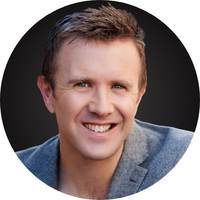Avoid burnout by building recovery into your routine
Published:

Burnout. We’ve all become familiar with the term over the last few years. In our busy lives and careers, burnout is all too common, all too easy to slip into and hard to combat if you’re not sure where to start.
At a previous Tax Summit, we heard from human performance researcher Dr Adam Fraser, on the most effective ways to manage your wellbeing while building a busy and successful career. And the message is still as relevant as ever. One of the many useful insights he shared was the importance of regular recovery in order to be your best self.
The summer holidays are the perfect time to think about recovery – and not just a few weeks off now, but a regular schedule of recovery that allows you to bounce back from busy periods and put in your all when it comes to work or family.
Dr Fraser introduced us to the Daily, Weekly, and Monthly layers of recovery, that combined, set you up for success. Here’s a quick rundown of the basics:
Daily – Do something that relaxes you
The first step in Dr Fraser’s plan is to incorporate deep relaxation into your daily routine. This doesn’t mean zoning out in front of the TV for an hour every night.
When Dr Fraser talks about deep relaxation, he means the kind that slows your nervous system right down, which is achieved only by certain activities, such as mediation, mindfulness, relaxation apps or fiction reading.
The good news is, just 5-10 minutes a day of these activities is all it takes. Dr Fraser says it’s the regularity, not the length of this relaxation practice that’s key.
“What you’re doing is retraining your brain to be able to turn off and relax, and that is a critical skill to have.”
Action: Set aside 5-10 minutes each day, dedicated to an activity where you can maintain deep, slow breathing and a calm focus on one thought.
Weekly – Do something that energises you
“The challenge of high performers,” Dr Fraser says, “is that you give so much. You give to your organisation, you give to your clients, you give to your business if that’s your role, you give to your direct reports, your family, you might have elderly parents you look after. One of the things that’s driving burnout is we just give out so much energy.”
You can’t pour from an empty cup, so what do you do to recoup the energy you give to those around you? A core part of effective recovery, he says, is doing something each week that makes you feel alive and re-energises you.
Action: First, take some time to think about what energies you. It may not be the same as someone else, so this requires some self-reflection. Here are some examples to get you started:
Getting out in nature for a bushwalk or a swim
A creative pursuit, like painting, music or crafting
Time alone with a good book
An activity with friends, such as bowling, team sports, or board games
Then, carve out time in your schedule to dedicate to this activity each week, maybe by joining a group, or just by making a date with yourself.
Monthly – have a day of no responsibility
Finally, Dr Fraser says the last piece of the puzzle is to give yourself one day each month where you have no responsibilities, no agenda and no expectation of productivity.
“One of the things that’s driving burnout is our lives are so full,” he says. According to his research, high performers who coped quite well under high stress conditions regularly had a day with no agenda and nothing to do – a “freedom day”.
What you do on your freedom day is up to you – see other people, spend it on your own, go out and do activities or spend it at home. The key is that you do what you feel like, when you feel like it, without a set schedule or deadlines, without any urgency or expectations.
If that sounds a little intimidating (or flat out impossible), you’re not alone. It may take a little while to get the hang of this one, and you may have to enlist the help of your partner, family or friends to make it work, but there’s no better time to start than over the holiday period, when most people are able to slow down a little. And there’s no more important time to implement it than now, after nearly two years of particularly stressful circumstances.
Action: Sit down with your calendar and plot out a day to earmark as your freedom day (and book this day in for future months if you can). Then, when the day rolls around – do whatever you like! Some tips to make this easier are:
Turn off your phone, or, if that’s not possible, block any notifications except the ones that are necessary or bring you joy.
Set your #OutOfOffice message and ignore emails without guilt.
Think about what you really want to do. It’s easy to spend half a day in front of Netflix, but take a moment to check in with yourself to see if that’s really what you want to spend your obligation free day doing. If not, there’s lots of other fun things to fill your day. If so, then hit ‘next episode’!
About Dr Adam Fraser

Adam is a human performance researcher and consultant who studies how organisations adopt a high performance culture to thrive in this challenging and evolving business landscape. He has worked with elite level athletes, the armed forces and business professionals of all levels. In the last 10 years he has delivered more than 1500 presentations to over half a million people in Australia, New Zealand and worldwide. He has worked in many industries with clients including CBA, Westpac, Optus, Telstra, IBM, PwC, Ernst & Young, Asteron, AON, Local Government Managers Association, Merck Sharpe & Dohme, Queensland Law Society and the Department of Education. In addition to this Dr Adam is the author of four best-selling books, including his latest book released in 2020 ‘Strive’ and the acclaimed ‘The Third Space’. Adam is a regular presenter on TV and Radio and has appeared on Mornings, Sunrise, Today Show, ABC Radio Nationally and Sky news, as well as features in AFR, SMH and The Age.


.png)